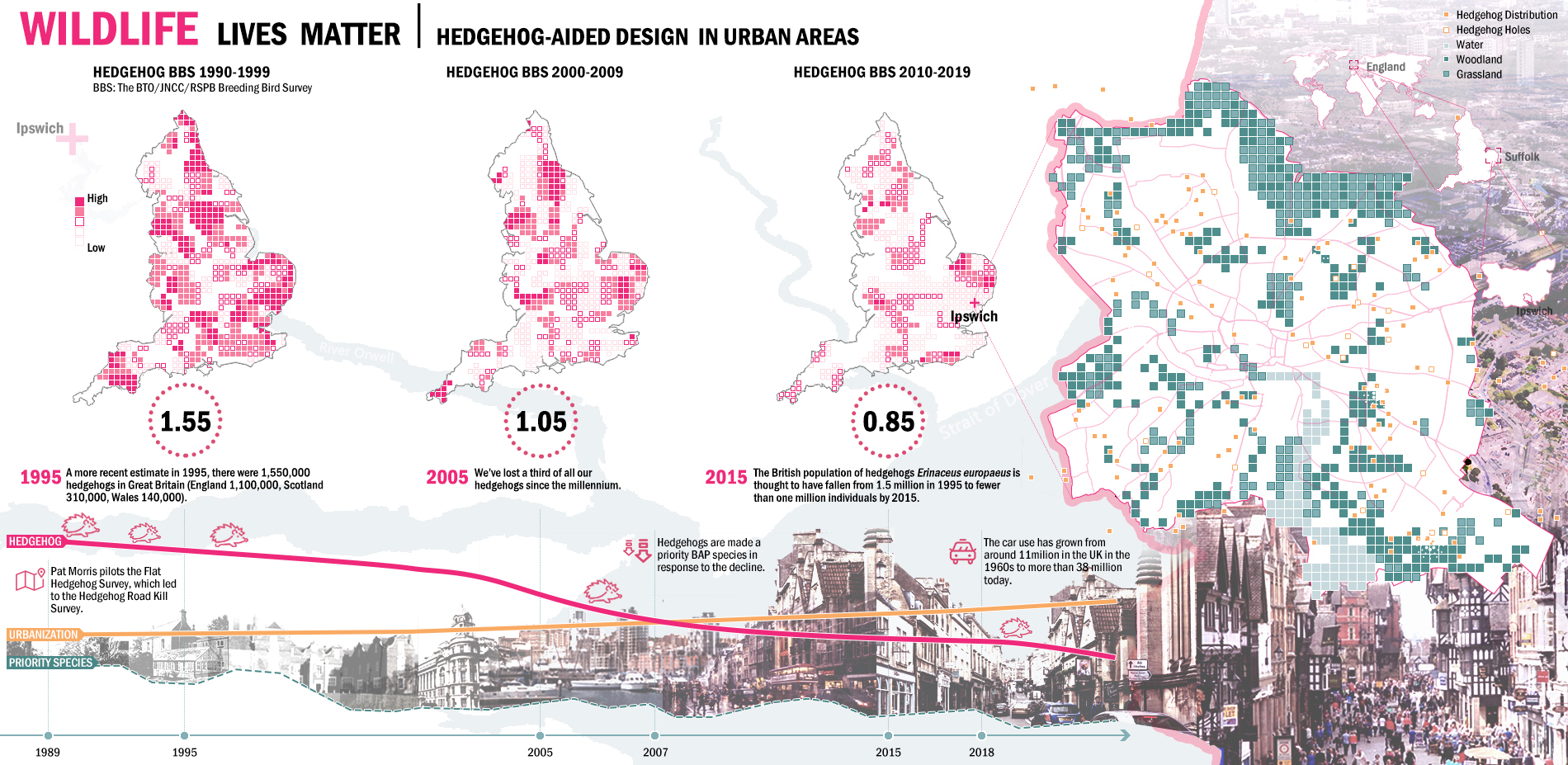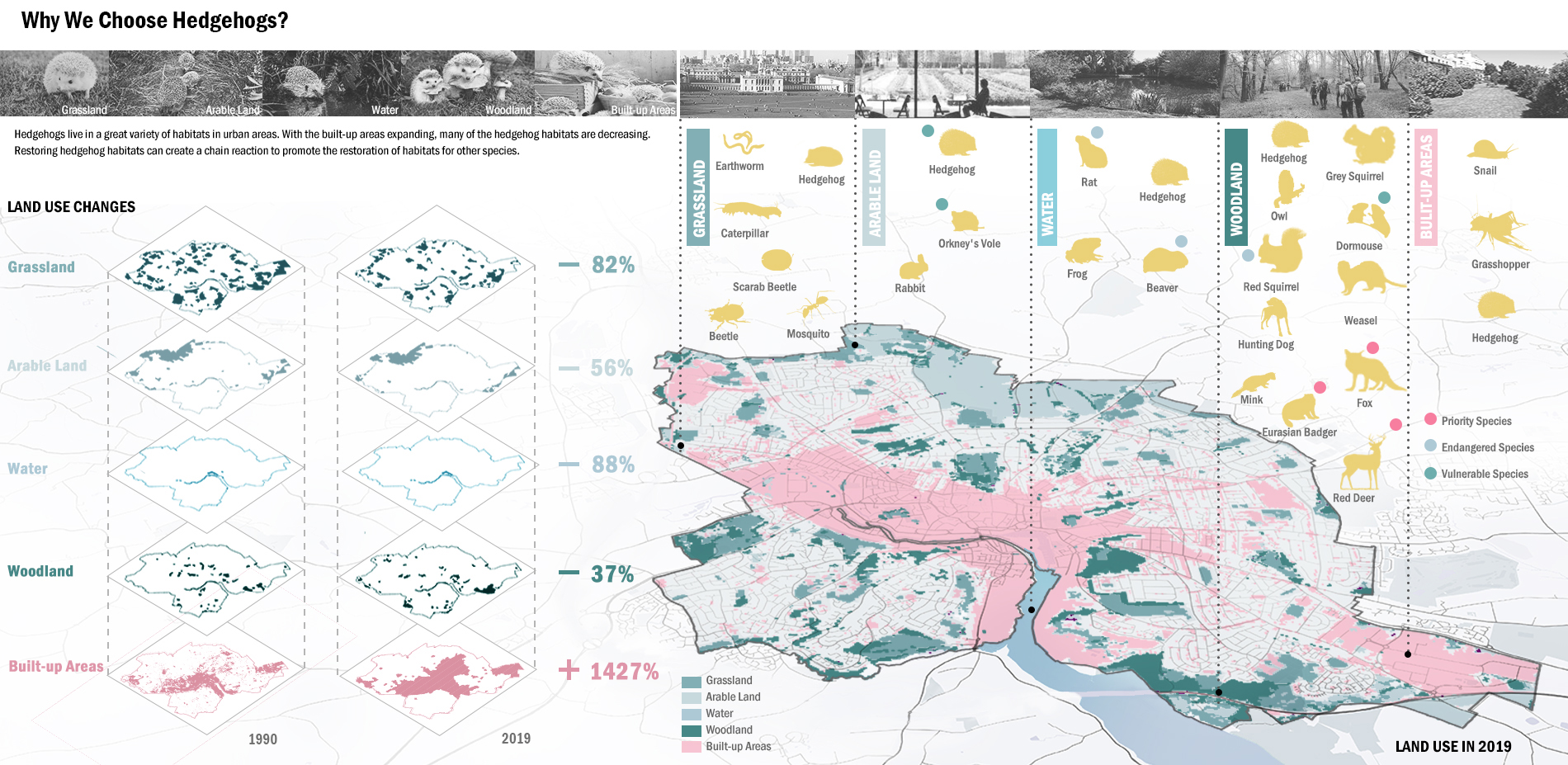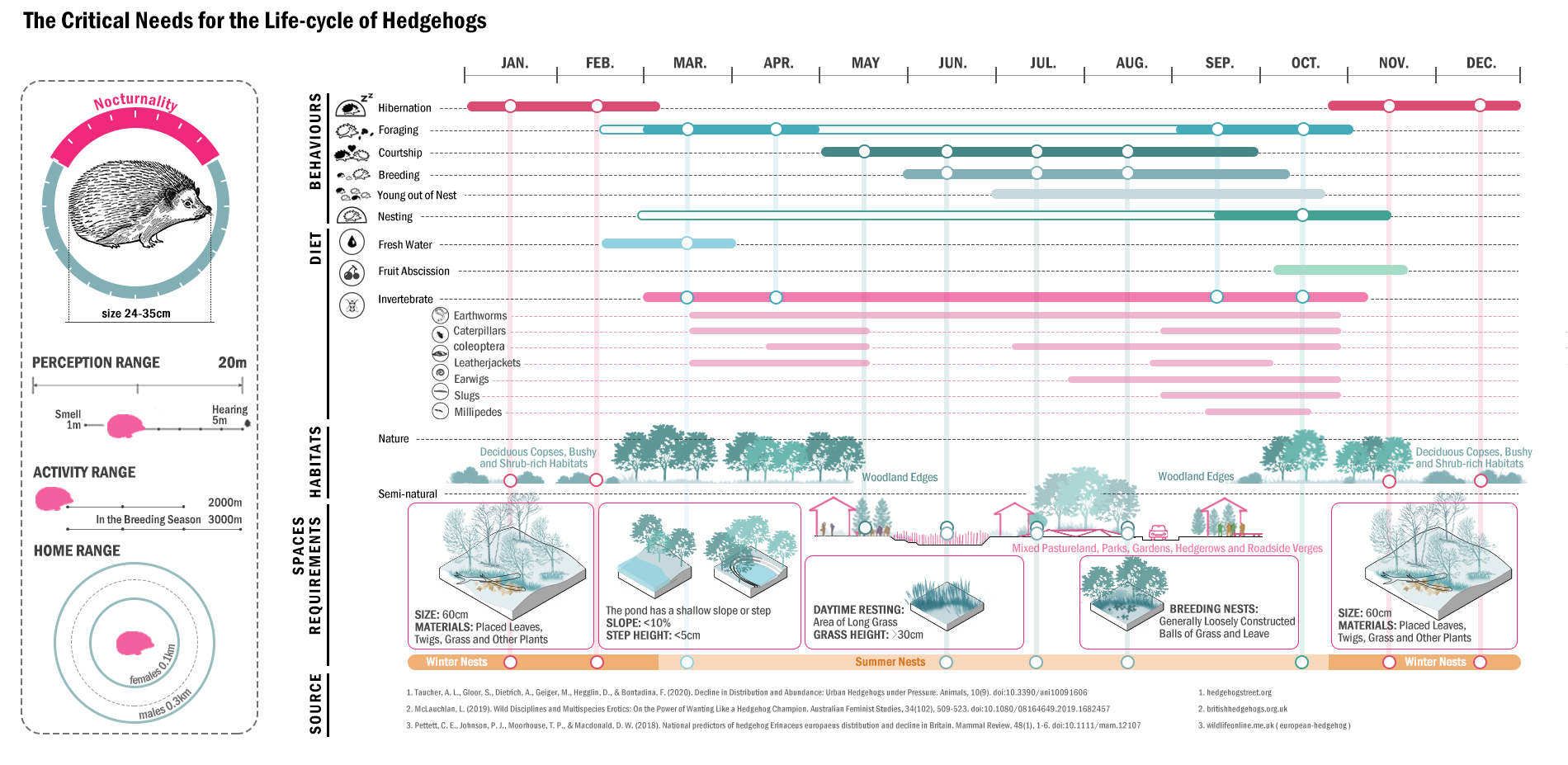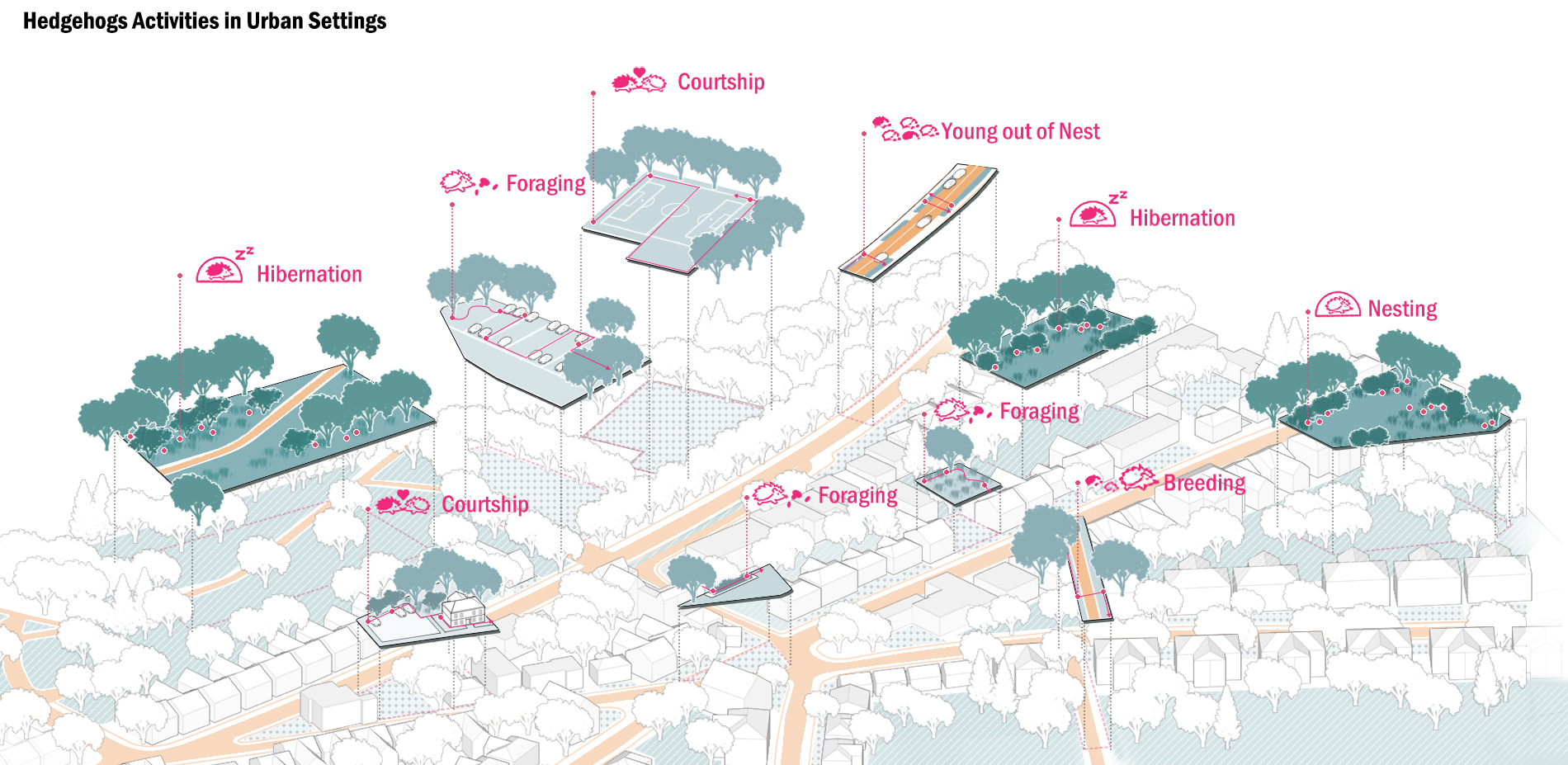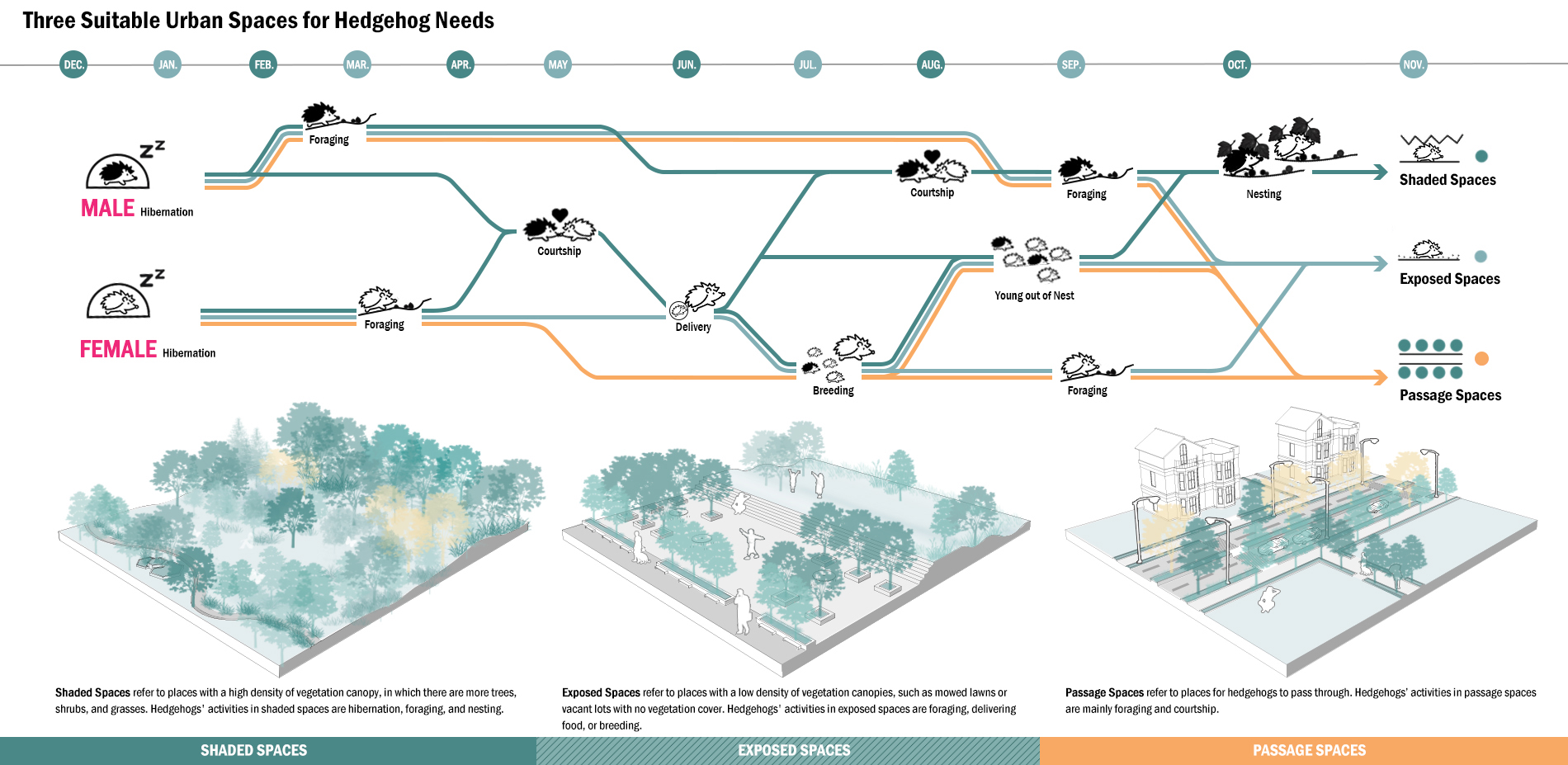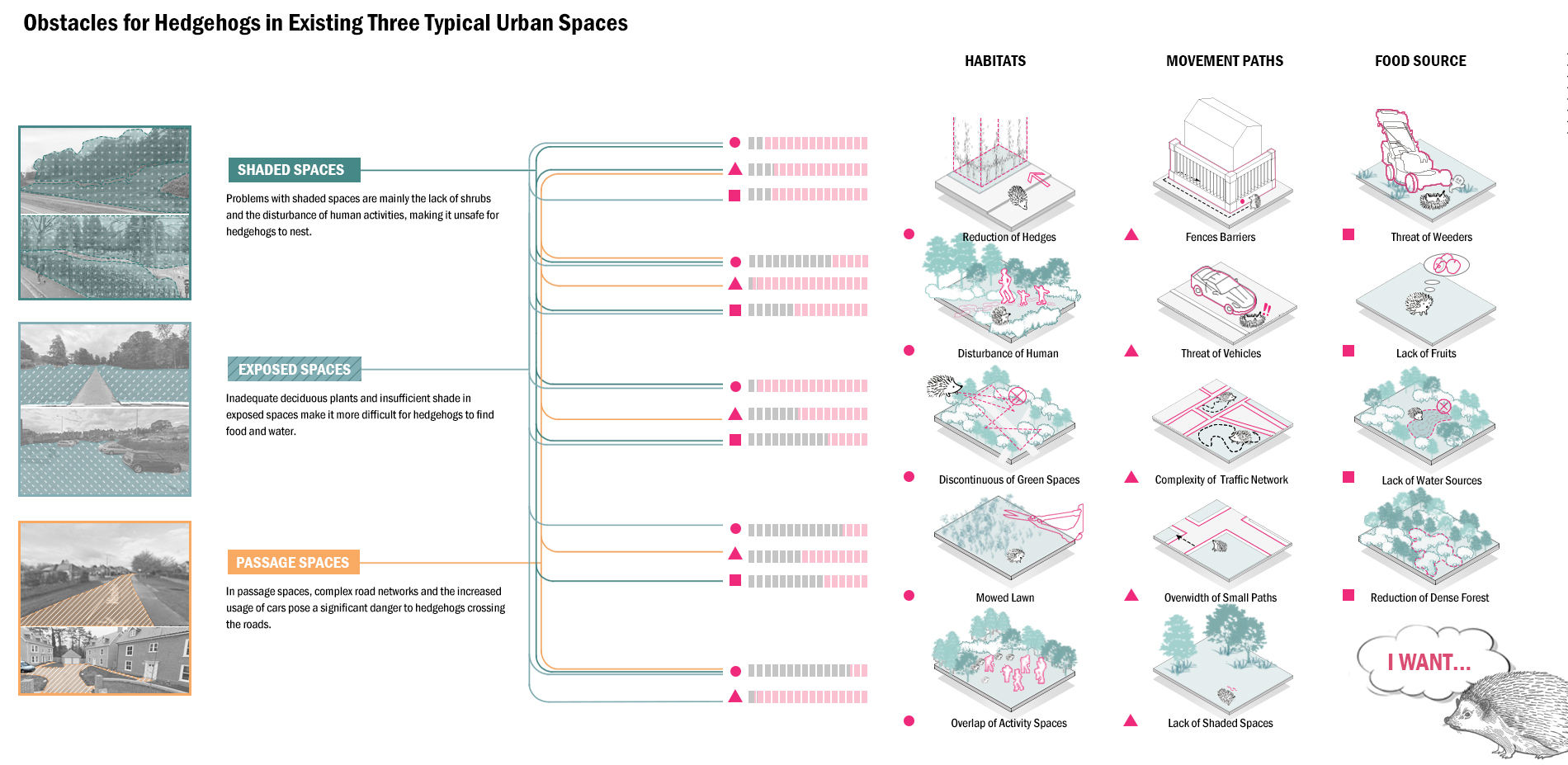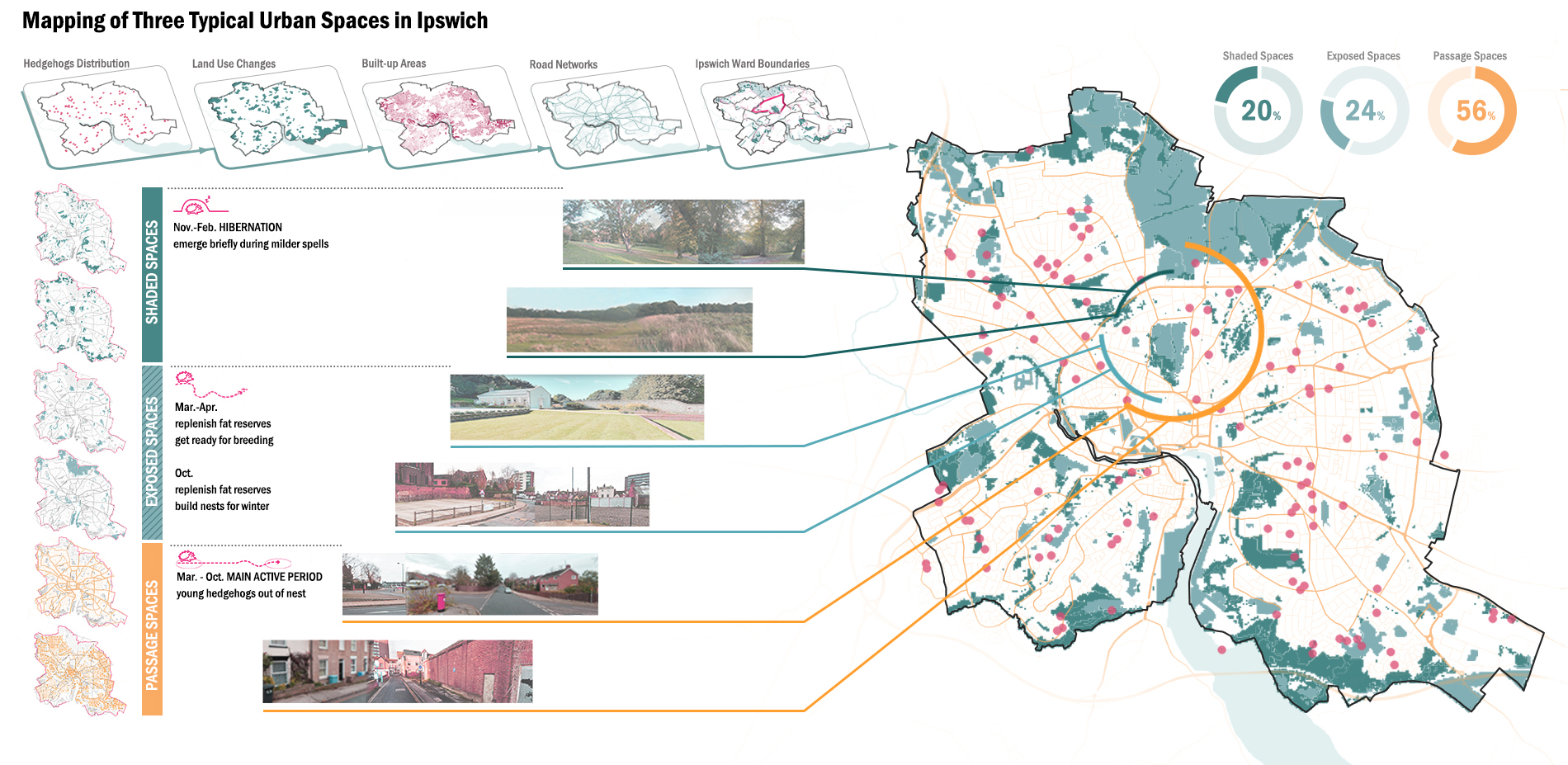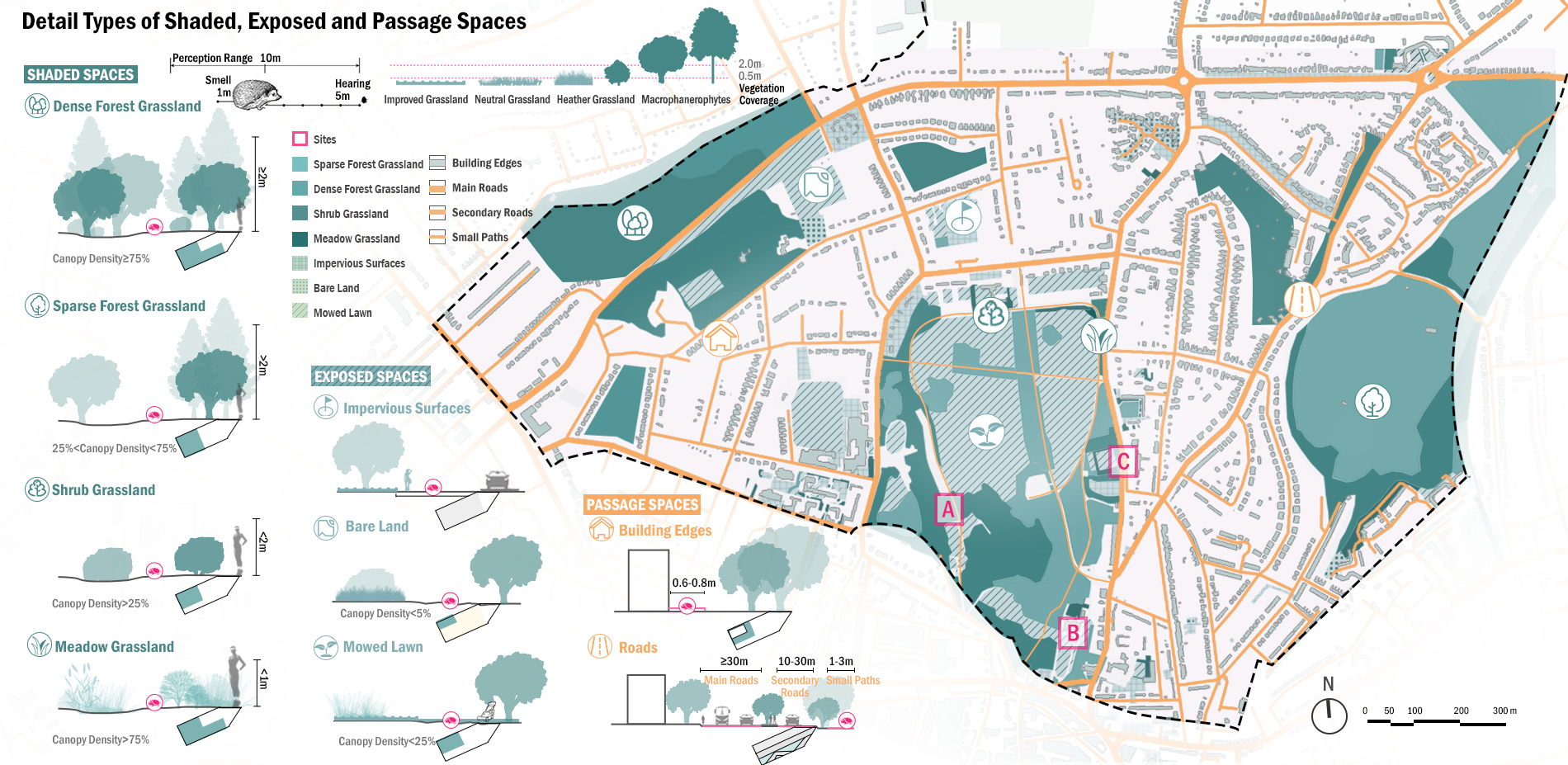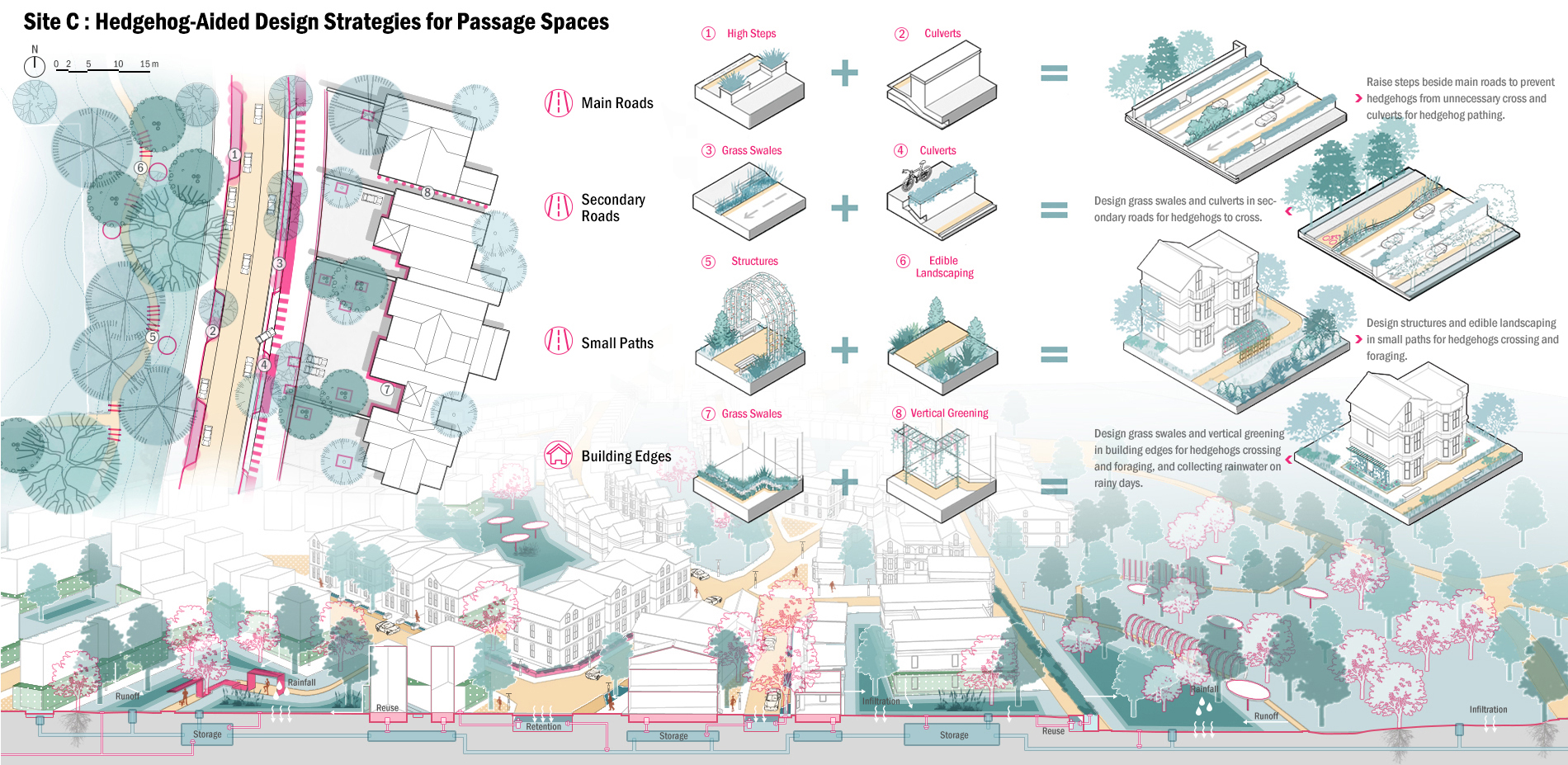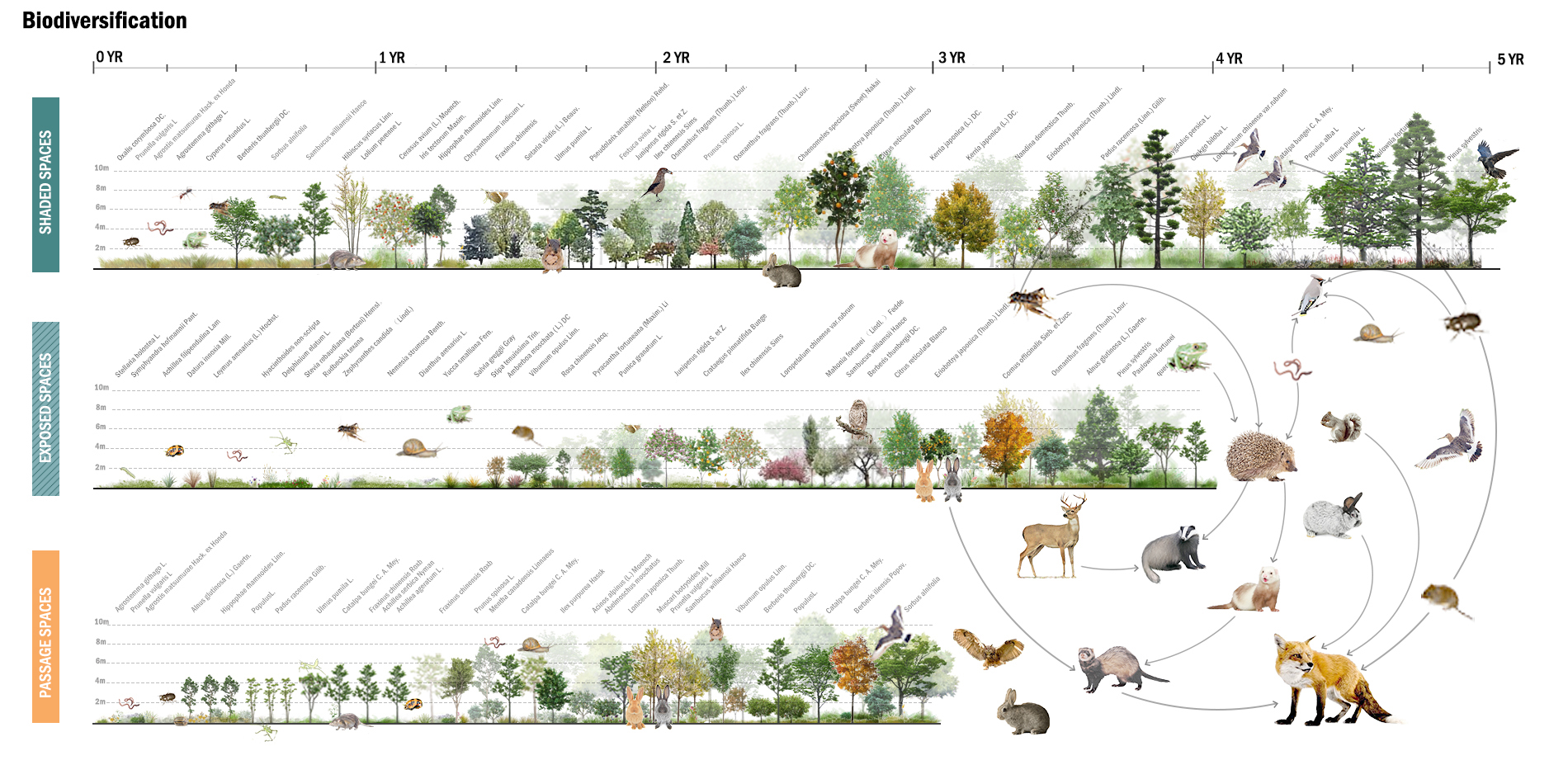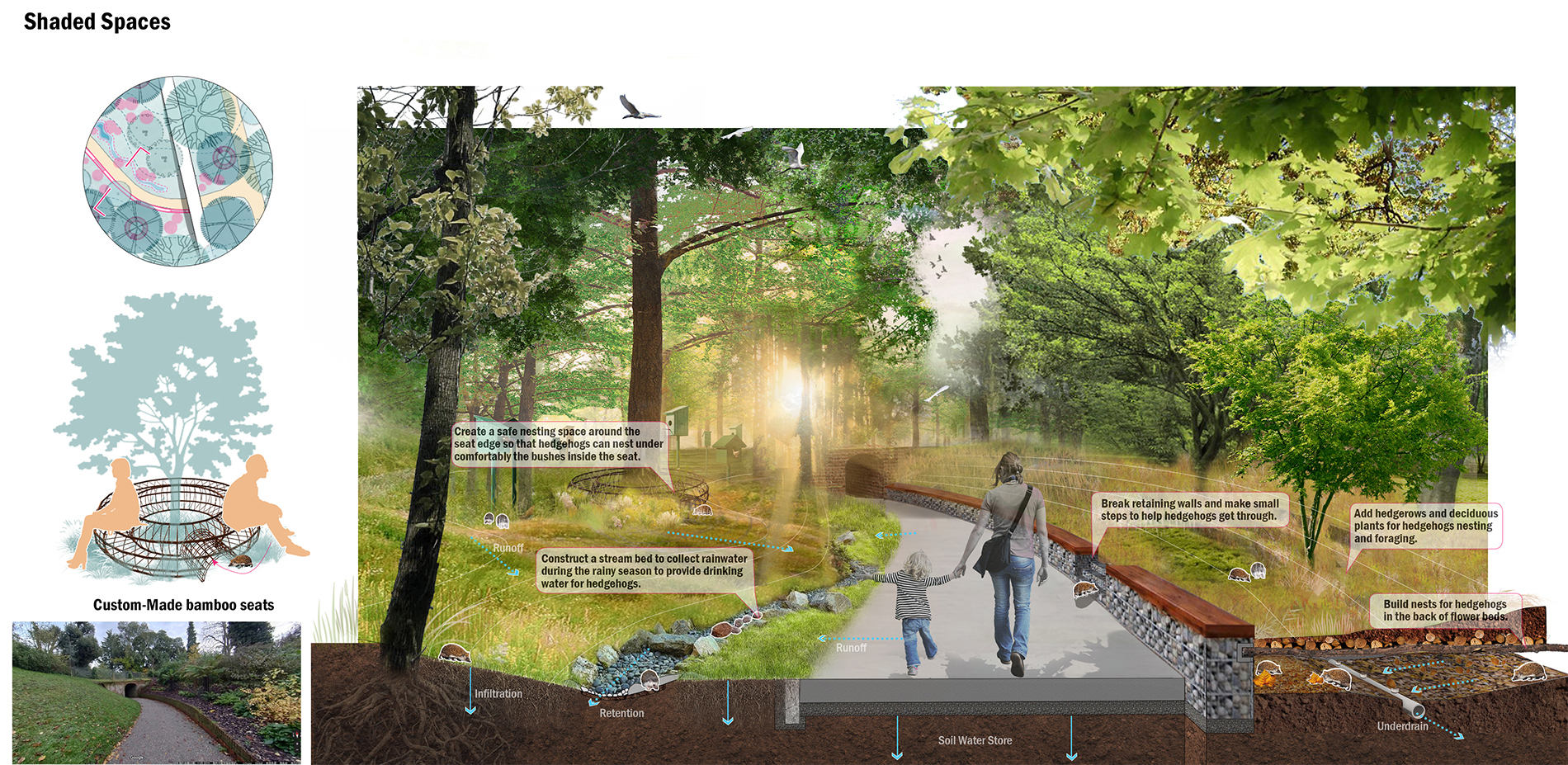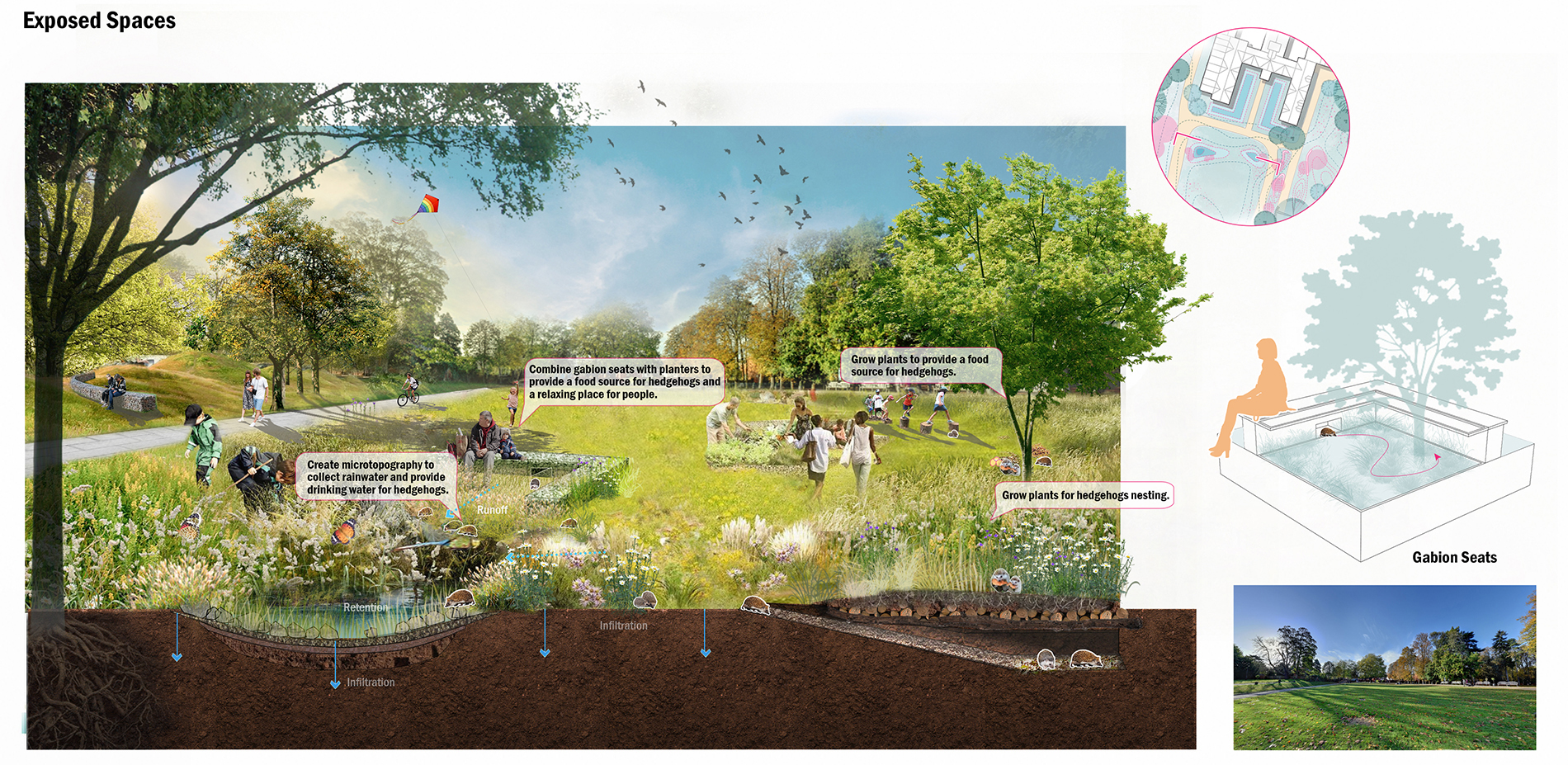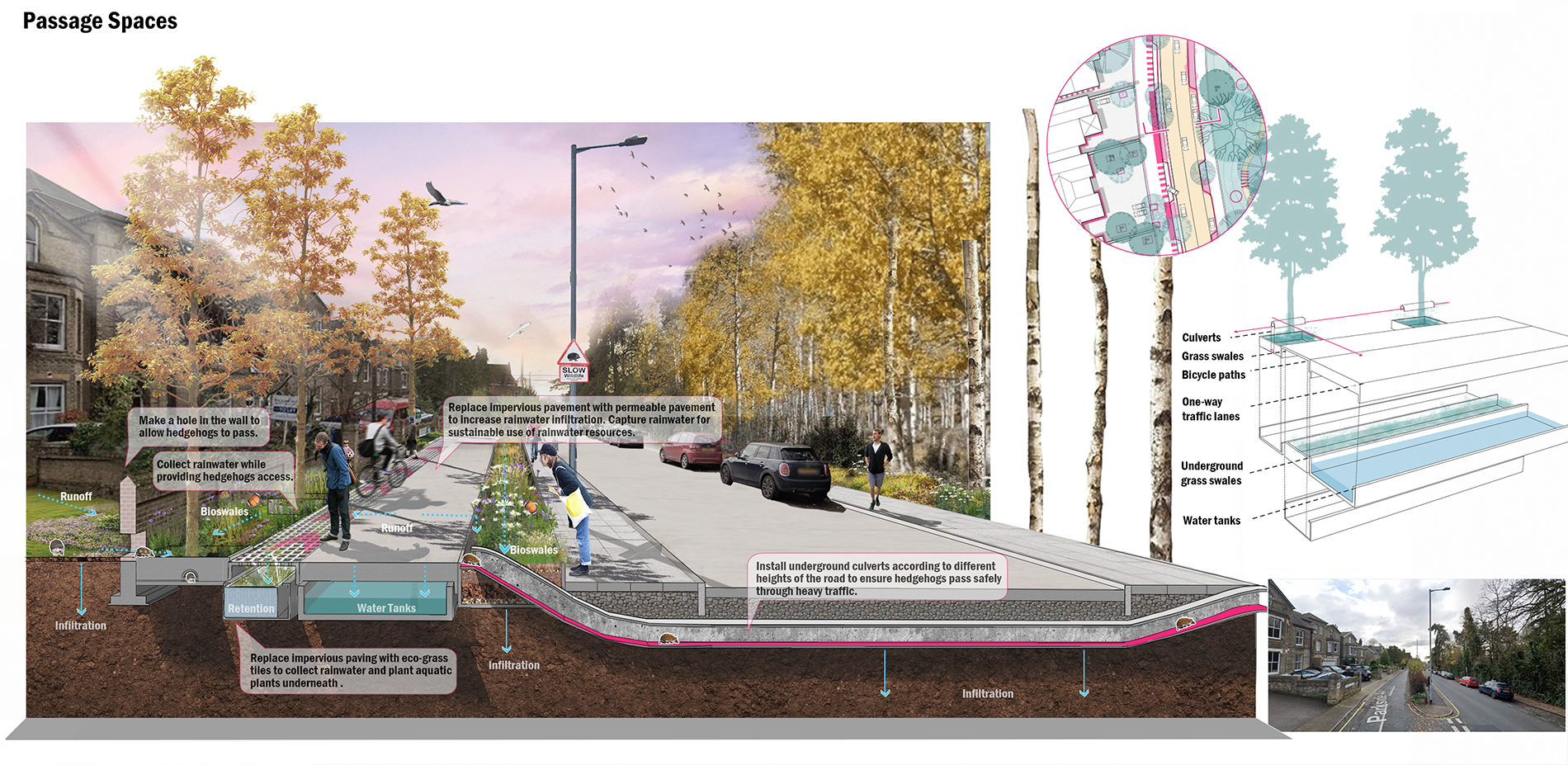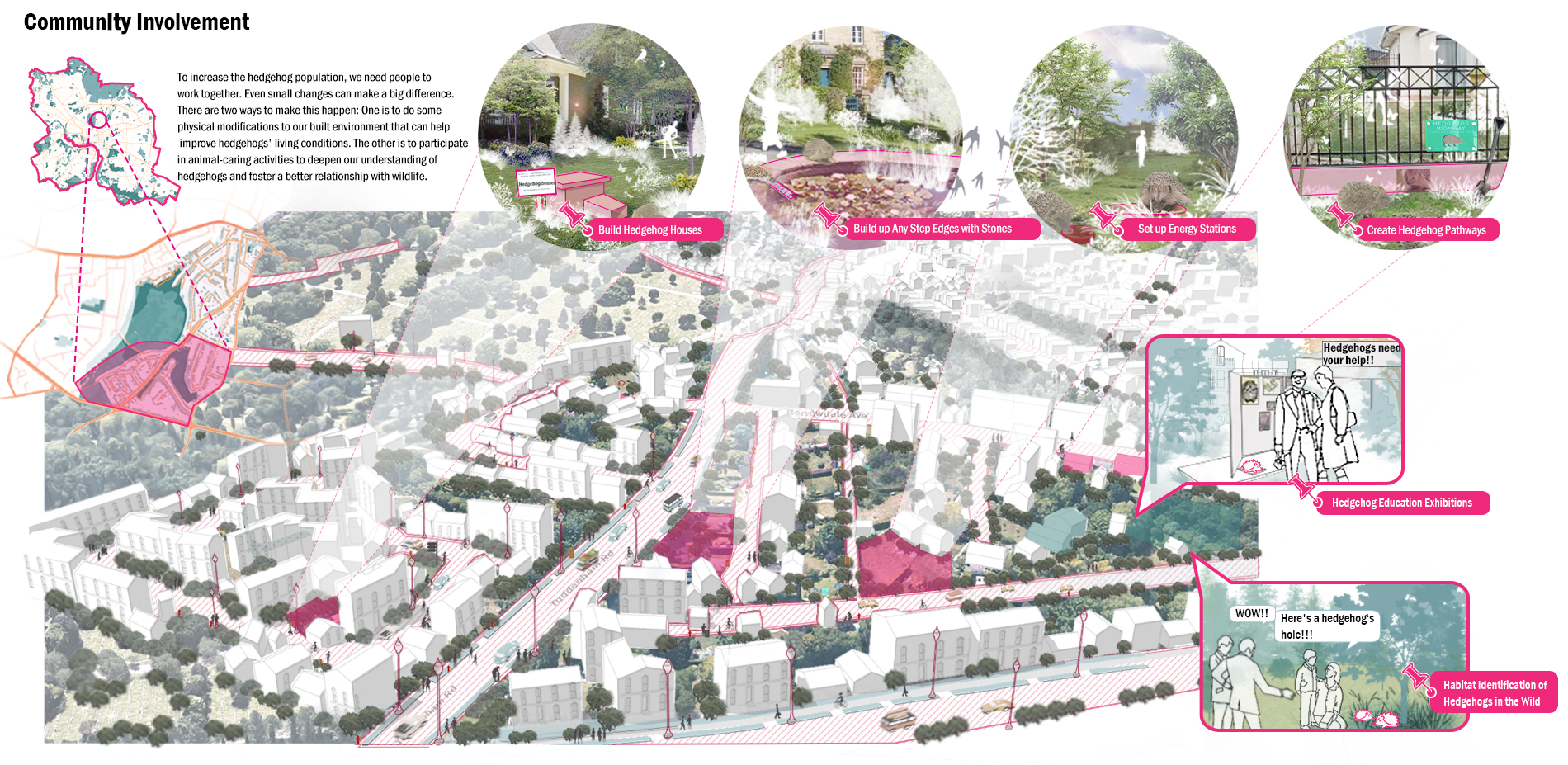Wildlife Lives Matter: Hedgehog-Aided Design in Urban Areas
Honor Award
General Design
Ipswich, Suffolk, England
Xinyue Wang; Xindi Zhang; Chenyue Zhang; Muwen Qin; Meisi Wang; Shuyu Wei
Faculty Advisors: Jun Zhai
Soochow University
The scale of the subject matter and the intersection of urbansim was fascinating; in this case, studying the humble hedgehog and its disappearing habitat. That level of attention to detail is impressive, and paying attention to the intersection of urbanism and the animal itself was incredibly thoughtful. Ultimately the project created a framework for other species, to attend to habitats lost to urbanization.
- 2021 Awards Jury
Project Statement
The site locates in Ipswich, England. The project focuses on Urban Rewilding. It can enhance the resilience of the ecosystem and maintain biodiversity. It has an important and unique value in reconnecting people with nature and maintaining ecosystem services.
Hedgehog is one of the sharp declines of various wildlife species in recent years due to urbanization in the UK. And it has a very wide range of habitat types in the city, overlapping with many wildlife habitats types. Therefore, we choose the hedgehog as the key species.
We use the scale and range of the hedgehog's daily activities as a point of departure, and analyze the issues threatening the existence of hedgehogs in three urban space types (Shaded, Exposed, and Passage Spaces). We hope to achieve integration of the wild natural system and the built environment by hedgehog-aided design and urban rewilding approaches in urban areas. So, we can create a healthier and sustainable "wildlife-friendly city" and create an urban ecosystem where humans and wildlife coexist.
Project Narrative
1.Topic, Current Solution and Our Stance Urbanization has encroached on the original habitats of some wild animals and forced them to settle in cities. To have wildlife survive in the cities makes us start to think about how to achieve harmonious coexistence with it. Now many urban planners and landscape architects have realized this issue and begun to take action. However, to increase the supply of ecosystem services and halt the loss of biodiversity, we think purely conservation-driven approaches (such as protecting intact natural areas) may not be sufficient, as the rate of wildlife declines rapidly. In our views, the conservation of urban wildlife does not necessarily require a major engineering project. When a specific wildlife is considered as a conservation target, small design interventions can have significant effects.
2. Methodology: Urban Rewilding Compared with the traditional purely conservation-driven approaches, urban rewilding is a means of landscape design that integrates the concept of wild nature conservation and restoration. Urban rewilding created through low human intervention not only protects endangered species and their habitats, but also provides valuable opportunities for urban dwellers to experience nature.
3. Strategy: Hedgehog-Aided Design in Urban Areas In recent years, there has been a dramatic decline in the amount of wildlife in the UK, from hedgehogs to Eurasian badgers. We hope to improve the wildlife living situation through targeted wildlife-aided design. Given their extensive urban habitats and many other priority species that are also present in their habitats, we chose hedgehogs as our target species. By restoring hedgehogs’ habitats and creating a suitable urban environment, we can promote the recovery of animals and plants in its upstream and downstream biological chains. By hedgehog-aided design, we can also provide a foundation for reconstructing an urban environment suitable for the survival of many wildlifes.
4. Solutions The project is based in Ipswich, which has seen one of the biggest declines in hedgehog numbers in the UK. Starting from the needs of hedgehogs in their whole life-cycle, we made an in-depth study of their body size, perceptive range, movement distance, and their behaviors in their entire life-cycle in the city. Based on this study, we divided urban spaces into three typical types: shaded spaces, exposed spaces, and passage spaces (from a hedgehog perspective). We analyzed the obstacles in detail that hedgehogs might encounter in living in each of these urban spaces. We found that shaded spaces are mainly unsafe for hedgehogs to build nests. Lack of adequate food and water are the issues for hedgehogs in exposed spaces. In the passage spaces, the migration behaviors of hedgehogs overlaps with human behaviors, which affects the safety of hedgehogs' activities. In the subsequent design, we subdivided the site into specific space types and put forward re-modification strategies for each type accordingly:
1) According to the density of vegetation canopy, we divided shaded spaces into four types: Dense Forest Grassland, Sparse Forest Grassland, Shrub Grassland, and Meadow Grassland. For dense forest grassland, we increase hedgerow planting, place gabions, so that hedgehogs can nest safely in them. For sparse forest grassland, we add dry stream beds to facilitate hedgehogs looking for water after waking from their hibernation. For shrub grassland, we increase the richness of native plants, and design a stepped retaining wall for the flower beds, so that hedgehogs can climb inside of the flower beds for nesting. For meadow grassland, we remodify terrains to collect water in low-lying places.
2) We divided exposed spaces into three types according to the land cover: Bare Land, Mowed Lawn, and Impervious Surfaces. We add microtopography and plant clusters of falling and fruiting plants on the bare land. For mowed lawn, we add multiple levels of vegetation and design rain gardens. We add gabion seats and water squares on the impervious surfaces to form a twofold landscape.
3) According to the width of linear spaces, we divide passage spaces into Main Roads, Secondary Roads, Small Paths, and Building Edges. We raise the height of the main roads curbstones to block unnecessary hedgehogs cross, excavate culverts under main roads for hedgehogs passing. Grass swales are arranged on both sides of secondary roads for hedgehogs crossing. For small paths, we add structures such as planters to form shaded falling fruit plants. As for the building edges, we add vertical green walls to bring a sense of security to hedgehogs and set planting trenches to collect rainwater on rainy days.
We also present a list of plants used to construct a natural succession community dominated by native species. In terms of community participation, hedgehog-themed exhibitions, hedgehog nest construction, field hedgehog observation, and other activities were held to raise residents' attention to the living environment of hedgehogs.
Plant List:
- Cyperaceae
- Prunella vulgaris
- Agrostis
- Dog-rose
- Grape hyacinth
- Bluebell
- Lolium
- Succisa pratensis
- Ragged-robin
- Festuca
- Mentha aquatica
- Blackthorn
- Berberis
- Hazel
- Juniper
- Alder buckthorn
- Elderberry
- Dogwood
- Guelder-rose
- Honeysuckle
- Alder
- Holly
- Wych elm
- Beech
- Bird cherry
- Wild cherry
- Rowan
- Whitebeam
- Hawthorn
- Ash
- Oak
- Scot’s pine
